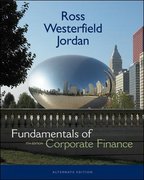Answered step by step
Verified Expert Solution
Question
1 Approved Answer
Summarize from this article with easy to understand sentences thank you ADVERTISE in Brief For many years, internal controls have been the focus of auditors'




Summarize from this article with easy to understand sentences thank you
ADVERTISE in Brief For many years, internal controls have been the focus of auditors' risk assessment as they seek to attest that the control environment is working effectively to minimize the potential for fraud. As standards have evolved to focus more on fraud, so has technology. Innovations such as artificial intelligence (AI), robotic process automation (RPA), and blockchain have been touted as tools that will assist in identifying fraud; however, what if they actually make that job much more difficult by enabling potential fraudsters to perpetrate more robust and harder-to-detect crimes? The author investigates this question and arrives at some disturbing conclusions. From 2000 to 2002, corporate accounting and financial scandals rocked investors.ultimately costing individuals billions of dollars, collapsing major corporations, and drastically upsetting confidence in U.S. securities markets. Companies such as Enron and World Com among many others, were embroiled in financial scandal. Off-balance sheet loans, manipulation of commodity prices, improper accounting practices, falsified financial results-these improprieties all centered on the relatively unregulated environment at the time. That supposedly changed on July 30, 2002. with the passage of the Sarbanes-Oxley Act (SOX). Prior to SOX's enactment, auditors operated in a self-regulated. peer-reviewed environment whose standards were set by FASB and overseen by the AICPA. SOX mandated SEC oversight and created the PCAOB, which was charged with establishing auditing and related attestation quality control, ethics, and independence standards and rules to be used by registered public accounting firms in the preparation and issuance of audit reports. SOX also took numerous steps to reform the public accounting profession, which included establishing standards for auditor independence, requiring enhanced financial disclosures, and promising criminal fraud accountability. Type here to search i ADVERTISE V dynatrace Applications: 27 Infra/hosts: 110 But the accounting profession was not the only institution that needed to change. Corporations themselves were forced by SOX to address boardroom failures that led, or at the very least contributed, to these scandals, including their lackluster "deferred maintenance" attitude to the system of internal controls over financial reporting (ICFR). Improving corporate governance and executive fiduciary responsibility were paramount to SOX's success in curbing future improprieties, and it took those items head on by directly addressing loans to related parties, management oversight, due diligence by directors, and compensation of officers, as well as requiring independent audit committees and an ethics code for financial officers. Title III of SOX specifically requires both the CEO and CFO to certify not only that they have reviewed financial reports, but also that they believe the financials fairly represent the company's financial position. If, at a later date, financial statements must be reissued due to noncompliance with GAAP. executives must return any bonuses received for that year, hopefully eliminating any financial incentive to inflate earnings. edbyadbutler.com/redirect spark?MID=165519&plid=1306895&setID=4610328 channel=0&CID=449261 O&itext! Tume horo to More than 15 years later, the debate still rages as to whether SOX has been effective enough to justify the hefty cost public corporations incur annually to remain in compliance. While the cost/benefit equation is certainly the most highly debated topic, the lack of impact surrounding internal controls should be a much larger concern to the public. According to a 2015 Audit Analytics study (Derryck Coleman, The Impact of SOX on Financial Restatements, Audit Analytics, Feb. 28. 2017, http://bit.ly/2JVJ7WK), the number of companies that have disclosed ineffective ICFR declined drastically in the years following the implementation of SOX section 404(b), though that percentage has risen recently (Exhibit 1). Exhibiti Companies Disclosing Ineffective Internal Controls over Financial Reporting Type here to search OBA 1 3294 3735 2.0% 0.0% 2004 2005 2006 2007 2008 2009 2010 2011 2012 2013 2014 2015 Source: Aut Analytics The decline in ineffective ICFR disclosures is almost certainly a result of SOX section 404(b) becoming effective for fiscal years ending on or after November 15, 2004. Section 404(b) requires companies to have external auditors not only report on financial statements themselves, but also attest to the effectiveness of the internal control environment. During that first year of implementation, 15.7% of companies were required to disclose ICFR material weaknesses. Over time, the percentage of companies disclosing ICFR declined dramatically, to a low of only 3.4% of companies in 2010. This data is fairly misleading, however, as the majority of these material weaknesses were only disclosed after companies had already restated their financials. As of 2014, the PCAOB had determined that an astounding 80.4% of companies issuing financial statement restatements had audits that determined effective internal controls prior to those restatements. Therefore, it was the restatements themselves, brought about by financial accounting discrepancies or oversight, that forced auditors to change their previous reports, changing the evaluation of the internal controls from effective to ineffective. In other words, the reliability of ICFR evaluations is questionable, leading one to ask whether SOX section 404(b), and thereby ICFR. is any deterrent to fraud. here to search OStep by Step Solution
There are 3 Steps involved in it
Step: 1

Get Instant Access to Expert-Tailored Solutions
See step-by-step solutions with expert insights and AI powered tools for academic success
Step: 2

Step: 3

Ace Your Homework with AI
Get the answers you need in no time with our AI-driven, step-by-step assistance
Get Started


